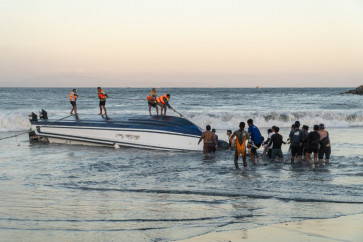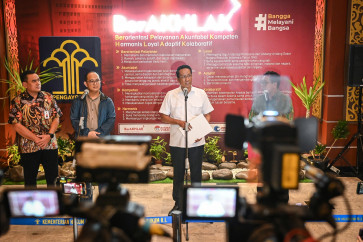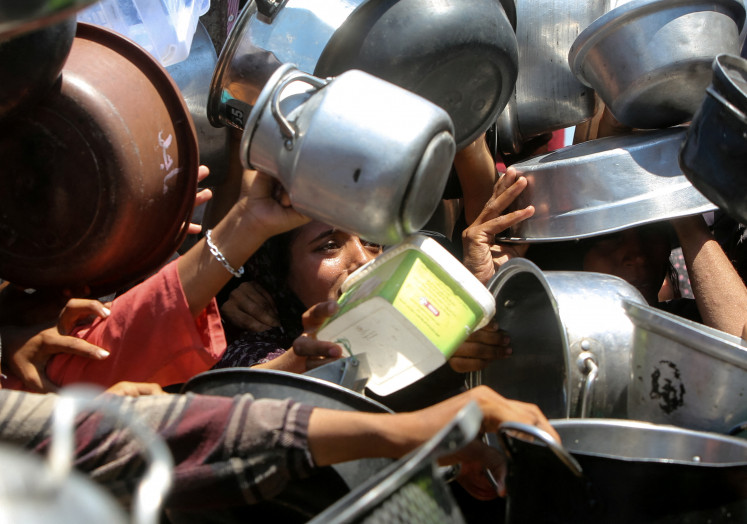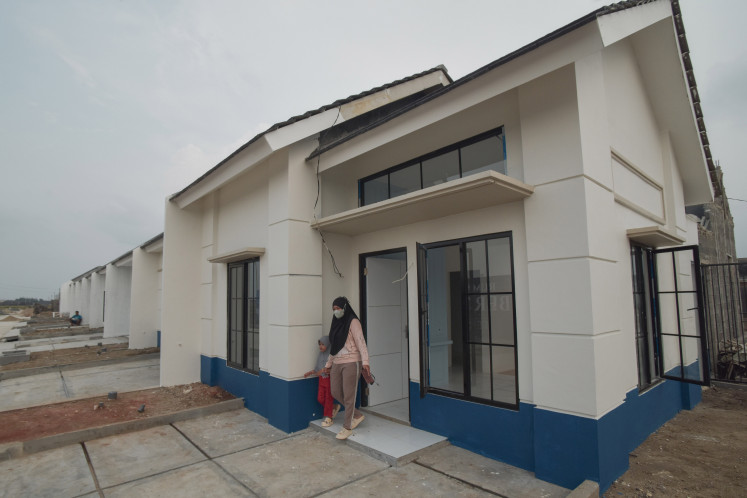Popular Reads
Top Results
Can't find what you're looking for?
View all search resultsPopular Reads
Top Results
Can't find what you're looking for?
View all search resultsContributing to the municipal waste management
The government is finding it impossible to solve waste management problems alone
Change text size
Gift Premium Articles
to Anyone
T
he government is finding it impossible to solve waste management problems alone. Community participation is needed to fill the gap. In Indonesia, one of the world’s most populous nations, the size of our communities can be made into a strength for waste management.
According to one study, it is important to ensure that waste management programs sustain the environment. However, the survey said that above all it is important to ensure that communities accept and support such programs. The study underlined the necessity of the community support in the municipal waste management chain. Optimally, when community acceptance is achieved, then a program can be launched.
In industrial nations, community acceptance might not play a role, since their governments have large amounts of investment capital and their inhabitants have the power to pay. But for developing nations such as Indonesia, which possess only a middling amount of capital and vast quantities of manpower, community involvement should be taken as consideration.
The government is familiar with community protests, including those related to waste management. Problems related to waste management, such as the development of a new treatment technologies and the improper treatment of existing waste, have forced communities several times to organize and articulate their protests.
Ideally, community contribution is needed for any proposed waste management program. A community must support its local waste management program. There are many things that members of a community can do.
When landfill treatment is the option, the easiest thing for a community to do is to dispose of waste properly. A landfill is a common means of waste treatment; avoiding contamination of groundwater and soil is critical.
Landfills creates odor and invites rodents, birds and insects and also creates leachate, or the noxious liquid created when water seeps through trash, taking chemical along with it. Even using the best technology, landfills liners might not stay impermeable and thus the generate leachate that may contaminate groundwater.
The most common issue plaguing landfills is greenhouse gas emissions, which has the potential to increase global temperatures. Methane, the main anthropogenic emission from landfills, is mainly comprised of organic compounds.
With advanced technology, methane gas can be converted into electricity and heat, thus becoming useful for human and industrial activities. To achieve the best results, organic compounds must be free when they arrive at the landfill, meaning that they stand alone and are not enclosed in plastic bags or packaging.
However, many people collect their waste in plastic bags, which bundle and trap gas, hindering the collection of organic compounds from the landfill.
In thermal treatments such as incineration, avoiding the formation of lethal toxins such as dioxin, furan and hexa-chlorobenzene is critical. These gases might be created when people use insufficient technology to burn waste that contains chemicals such as chlorines and heavy metals.
Incineration is the most effective way to treat waste. While the problem of toxins is reducible, how investment is required to develop the technology to reduced toxins remains. Technologically, the heat from the thermal process can be transformed into energy as well. The residue can also have other uses.
Incinerators designed for commingled waste require only a small community contribution. The separation of organic waste and fireproof material may also help to increase the efficiency of incineration, leaving a role for the community.
However incinerators burn off many recyclable materials, and for this reason separation is recommended. It saves virgin material and may also be able to reduce transportation costs and electricity consumption. Through recycling treatments, the community can contribute directly, as in a recycling bank scheme.
For organic treatment, more options are available. The main concept then is to return materials to nature as fertilizer. Composting and anaerobic digestion are the most common technologies used to process organic waste. The critical issue related for organic treatment is whether the product can safely be included in the consumption chain. Therefore goods such as medicine and heavy metals must be excluded from the treatment, thus also creating a role for the community.
Home composting, the smallest scale organic treatment available to a community, uses fresh organic waste from households. However, organic materials should be selected with care to ensure the quality of the compost. Home composting allows the community to take direct action.
On a large scale, composting and anaerobic digestion may also generate energy. As safety is the critical issue, the organic compounds should be separated from the beginning at the source. This is where the community shall contribute as well.
Over the years, waste has remained a problem. To manage the waste is no easy task. To manage waste production is even harder. Changes must first be made at the community level, as helping the government also means helping ourselves.
The writer is a doctoral candidate at Hamburg University of Technology in Germany.










